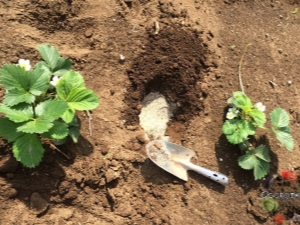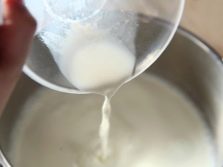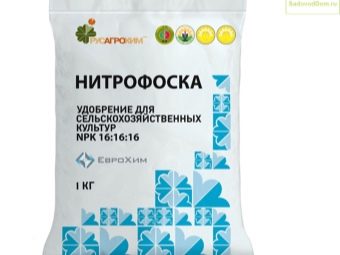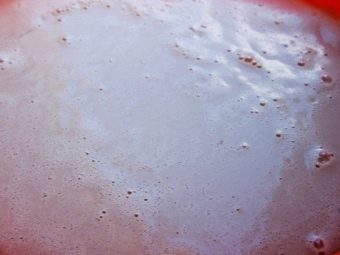How to feed garden strawberries?

Garden strawberries can grow on any soil, but an experienced gardener will do everything to improve its composition and increase fertility. The abundance of the crop, the quality and size of the fruit depend on this. Fertilization is provided throughout the season - from early spring, when the last snow melts, and ending with agricultural work after picking berries.
Organic Blends
Culture needs regular feeding. As in the case of other plants, it needs different types of fertilizers to stimulate the growth of roots, shoots and the formation of garden strawberry ovaries, and organic matter is one of them. The advantage of organic compounds is their harmlessness to the plant, moreover, the introduction into the soil is not associated with any restrictions, because the plant will take for itself as many nutrients as it needs for life.
Especially strawberries love the following mixture of natural origin.
- Cow dung, which is a mass of pet feces and straw. Usually, sodium sulfate is kneaded into it. The mixture is used as a liquid solution for watering the land around strawberry bushes.
- As a nitrogen fertilizer, bird droppings are used, usually chicken. It is simply diluted with water.
- Humus is a composition enriched with many useful substances that can nourish plants and soil throughout the year. It is required before planting the culture. This is the same manure, only completely decomposed as a result of the debate.
- Ash wood, including a large number of trace elements necessary for nutrition and growth of strawberries. It is dry in the furrows of the beds and between them. For greater efficiency, you can mix the substance with peat, however, it can not be used simultaneously with ammonia. This component improves the structure of the earth and the taste of the berries.
- Gardeners often use ordinary yeast, which accelerates the growth of roots and the culture as a whole. Because of the valuable composition, which includes nitrogen, phosphorus, iodine, strawberry bushes are less susceptible to diseases.
- Sour milk sour milk is useful for normalization of soil acidity, however, watering has its own characteristics - it is necessary to irrigate the land at some distance from the plant, at a distance of 10 cm.
Natural substances contribute to high yields, however, it does not count on the large size of the fruit. For this we need products containing mineral compounds.
Other types of fertilizers
For culture, fertilizing with mineral compounds is important, which have a beneficial effect on the size, juiciness and sugar content of fruits. But too frequent and excessive application of such preparations into the soil can be harmful for both strawberries and humans. Therefore, use them for 15 days before ripening berries.
The main types of such mixtures are as follows.
- Ammonium nitrate or ammonium nitrate, the main component of which is nitrogen. This substance is not able to oxidize the soil, if it has normal acidity, but if such a problem is present, then calcium carbonate is used along with it. The main effect of the agrochemical is the saturation of the plant with basic and additional trace elements.
- Nitrophoska is considered an effective synthetic fertilizer.However, caution is needed when working with it - uncontrolled introduction into the earth can lead to the formation of nitrates, in addition, the granules quickly ignite and can explode.
- Urea (urea) It is a granule containing about 50% nitrogen capable of enriching the soil for a long time. Fertilize the bushes can be by irrigation or spraying.
- Potassium chloride can be applied to top-dressing after harvesting., because chlorine is harmful to flowering and fruiting plants. Also, when growing strawberries, potassium salt, potassium sulfate is used, but it is better to use complex compounds that include this necessary element. These include "Kalimagneziya" and potassium nitrate.
Ready-made complex mixtures are preferable in many respects, since they already contain many macro- and microelements. They are simply diluted with water in a certain proportion. These drugs include Agricola, Stimovit, Azofosku, and Ryazanochka. In addition to feeding the soil and the plant itself, such compositions are able to protect the culture from fungus and insects, provide for ordinary watering or foliar feeding.
Agricultural work in the spring
In the spring you can feed the culture with nutritional formulations if it was not fed in the fall.
Mineral supplements and organic are suitable for this.
- Means such as last year's manure (1 part) and urea (2 parts) can be used on 10 parts of water. You can replace them with "Nitroammofoskoy" (Art. Spoon 10 l).
- In the beds with plants that are 2-3 years old, you can make rotted manure (2 kg) and ammonium sulfate (1 tbsp. L.) In a bucket of water. For each bush will require at least 1 liter of solution.
- Bushes, which for 3-4 years, it is better to fertilize chicken manure, settled for one and a half days. Water aisle, without affecting the foliage.
- Also, during the appearance of the first buds, it is important to add to the land of liquid manure, litter and any composition with potassium, which at this time strawberries are needed. Usually used a tablespoon of potash salt and two tablespoons of "Nitroammofoski" per 10 liters of liquid.
Top dressing during flowering
The soil for the plant is important to process during the formation of ovaries, to reduce the number of barren flowers. This requires a nutrient solution based on boric acid. It is prepared from 2 g of the drug, diluted with hot water in an amount of 10 liters. After cooling the resulting liquid should be carefully sprayed flowers and leaves of strawberry, preferably in the morning and evening.
It is also believed that at the end of May - the beginning of June, when forming the first berries, other fertilizers can be applied:
- potassium monophosphate (1 tablespoon per 10 liters), used after abundant watering of beds;
- the drug "Universal" in combination with potassium sulfate (1: 1);
- dry wood ash (one handful per bush), or as a solution (1 cup per 10 l).
At this time, it is quite possible to introduce organic matter, but if any additive is used in liquid form, then the soil is moistened and watered between the rows beforehand.
Top dressing during fruiting
The period of fruiting begins with the appearance of green berries and lasts until harvesting. As in the spring, at this time it is necessary to introduce organic mixtures based on dung, manure, liquid, green compost. The ratio of active substances and water is the same. Such works are usually carried out with a break of 10 days. Many people think that in the summer it is right to feed the plant with fertilizer such as yeast. This product can increase yields, saturate the soil with valuable minerals, but it can only be used in warm weather, with an active fermentation process.
Apply yeast as follows:
- 1 kg of fresh product is dissolved in 5 l of warm water and wait for fermentation;
- diluted with water before use (per 500 ml of 10 l of water);
- Pour the mixture into the ground under the bushes.
If you take dry yeast, then fermentation will need to add sugar (for a bag of 2 tbsp. L). You can feed strawberries with this composition up to 2-3 times per season.
Competent care after picking berries
It is equally important to add healthy additives to the soil after harvesting.
Strawberry bushes are weakened at this time, so for recovery you will need:
- the introduction of the mineral additive "Ammofoska" - it is scattered in a dry form, the earth is treated with hoe and watered, it takes 30 g per 1 m2;
- spraying with solutions of "Nitrofoski" or "Nitroammofoski" (1 tbsp. 1 per 10 l).
From organic fertilizers, bird droppings, cow dung, wood ash, ash, or herbal infusion of weeds and mowed grass with the addition of ashes are suitable. Pre-composition should ferment in the sun for several days.
Do not forget about the main rule when growing strawberries - it is better to underfeed than to overfeed the plant.
About how to feed garden strawberries to increase yields, see below.































